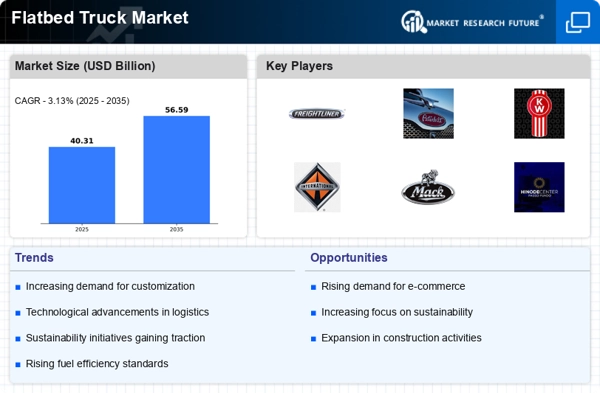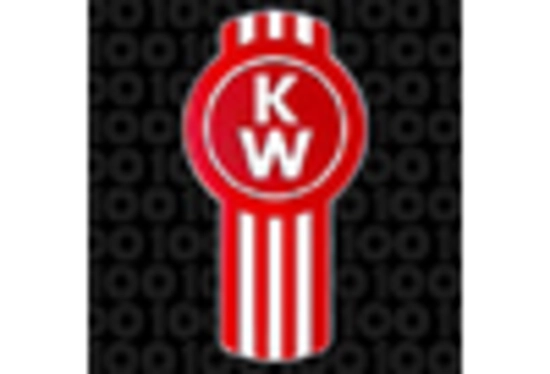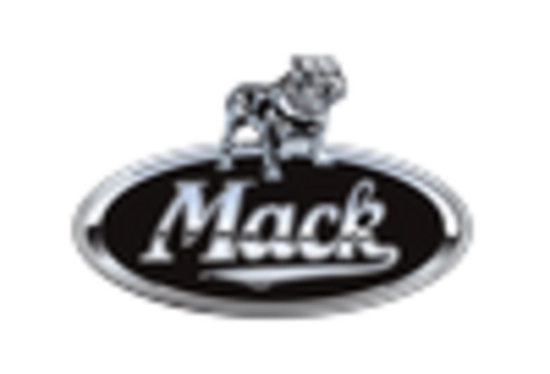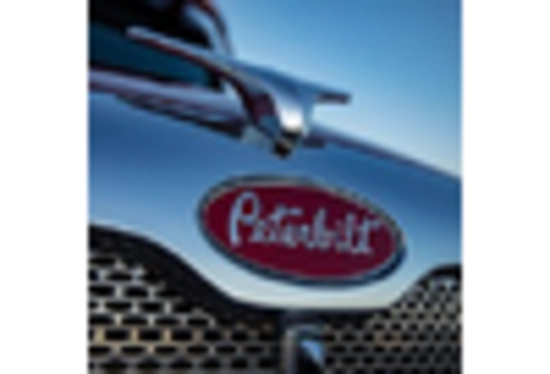Rising Demand for E-commerce
The Flatbed Truck Market is experiencing a notable surge in demand due to the rapid expansion of e-commerce. As online shopping continues to gain traction, the need for efficient transportation solutions becomes paramount. Flatbed trucks, with their versatility and capacity to carry oversized loads, are increasingly favored by logistics companies. In 2025, the e-commerce sector is projected to account for a significant portion of freight transportation, thereby driving the demand for flatbed trucks. This trend indicates a shift in consumer behavior, necessitating a robust logistics framework that can accommodate the growing volume of goods. Consequently, the Flatbed Truck Market is likely to benefit from this evolving landscape, as businesses seek reliable transportation options to meet consumer expectations.
Growth in Construction Activities
The Flatbed Truck Market is significantly influenced by the growth in construction activities. As urbanization accelerates, the demand for construction materials and equipment rises, necessitating efficient transportation solutions. Flatbed trucks are particularly well-suited for transporting heavy and bulky items, making them indispensable in the construction sector. In 2025, the construction industry is projected to witness substantial growth, driven by both residential and commercial projects. This growth is likely to translate into increased demand for flatbed trucks, as construction companies seek reliable vehicles to transport materials. The synergy between construction growth and the Flatbed Truck Market suggests a promising outlook for truck manufacturers and logistics providers alike.
Infrastructure Development Initiatives
Infrastructure development initiatives are playing a crucial role in shaping the Flatbed Truck Market. Governments across various regions are investing heavily in transportation infrastructure, including roads, bridges, and ports. This investment is expected to enhance the efficiency of freight movement, thereby increasing the demand for flatbed trucks. In 2025, the global spending on infrastructure is anticipated to reach unprecedented levels, creating a favorable environment for the flatbed truck segment. The improved infrastructure not only facilitates smoother transportation but also reduces operational costs for logistics providers. As a result, the Flatbed Truck Market stands to gain from these initiatives, as enhanced infrastructure directly correlates with increased freight activity.
Regulatory Compliance and Safety Standards
Regulatory compliance and safety standards are becoming increasingly stringent, impacting the Flatbed Truck Market. Governments are implementing stricter regulations regarding vehicle emissions, safety features, and driver qualifications. In 2025, compliance with these regulations is expected to drive demand for newer, safer flatbed trucks equipped with advanced safety technologies. This shift may lead to a gradual phase-out of older models that do not meet the new standards. Consequently, manufacturers in the Flatbed Truck Market are likely to focus on producing vehicles that not only comply with regulations but also enhance safety for drivers and cargo. This emphasis on compliance and safety could reshape purchasing decisions within the industry.
Technological Innovations in Fleet Management
Technological innovations in fleet management are reshaping the Flatbed Truck Market. The integration of advanced technologies such as telematics, GPS tracking, and route optimization software is enhancing operational efficiency for logistics companies. These innovations enable better monitoring of flatbed truck performance, leading to reduced fuel consumption and improved delivery times. In 2025, the adoption of such technologies is expected to rise, as companies strive to optimize their fleets and reduce operational costs. This trend indicates a shift towards data-driven decision-making in the transportation sector, which could further bolster the Flatbed Truck Market. As logistics providers embrace these advancements, the demand for technologically equipped flatbed trucks is likely to increase.


















Leave a Comment